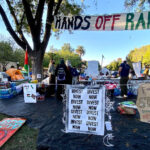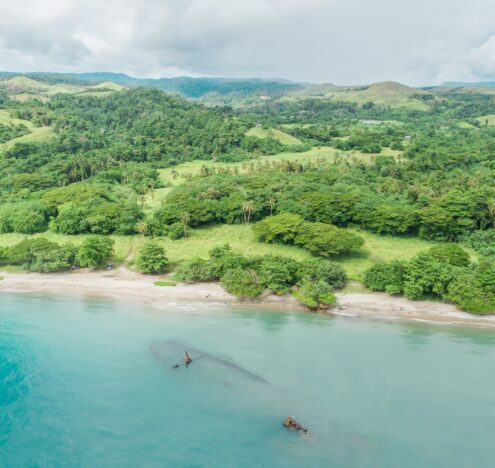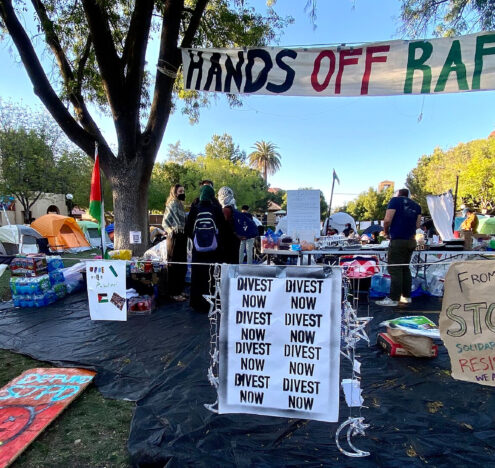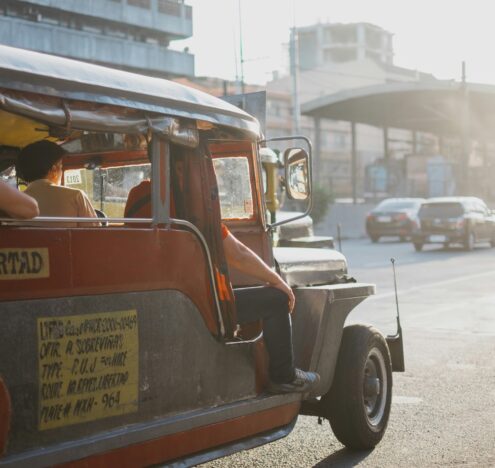When it comes to the insidious impact of small arms, the Indian state of Manipur is a case in point. Coupled with improvised explosives and gruesome killings, these small arms contribute to the perfect mix to derail years of social progress and people on both sides of the warring groups. The ready availability of small arms does not only prolong wars — it also has direct and indirect impacts, including psychosocial trauma and a culture of impunity.
In Manipur, stifled by firearms trafficking, historical narco-insurgency, and age-old tribal warfare, the violence has been persistent — and recently re-erupted — since their outbreak on May 3, 2023.
With civilians arming their Indigenous identity with M16s, No. 36 Hand Grenades, and a range of improvised weapons — and a scant response on the government’s part — one is prompted to question the reasons behind the legacy of poorly planned decisions and ineffective conciliatory strategies.
What began as a skirmish between the Meitei and Kuki-Zo-Hmar communities some nine months ago soon engulfed the entire state. It eventually spread across the region, unraveling the current state of play and potentially the vested interests of foreign armed groups.
The sense of insecurity rising from the government’s partial abandonment of the state has led to some sections of society taking matters into their own hands. As a frontier province, the conflict not only affects border security on the eastern front — it is also detrimental to the ambitious developmental and infrastructure projects under India’s Act East Policy which focuses on building strategic relations in the Indo-Pacific region.
Violence in Manipur
A fallout of colonial policy mishaps, Manipur — located in India’s northeastern region — is one of the seven states with the designation of “sister states.” The region is known for its perpetual “low-intensity conflict,” a place where riots, internet shutdowns, blockades, and curfews are commonplace. Bordering Myanmar, this anomalous zone is the product of decades of neglect and discounted grievances. Manipur’s population includes more than 50% predominantly Hindu Meiteis and 40% tribal groups, among them are Kuki, Nagas, Zo, and Hmar. The latter are predominantly Christian and occupy distinct territories and topographies.
On April 14, 2023, the Manipur High Court, acting on a writ petition, ordered the state government to submit recommendations on granting tribal status to the Meiteis. What started as a student rally on May 3, 2023, to protest the court order has now turned violent and evolved into a full-blown ethnic conflict. Reports from earlier this year have recorded a death toll of over 200 people with 96 unclaimed bodies, pending official records, and more than 70,000 displaced.
According to Al Jazeera, the ongoing violence has led to economic stagnation and layoffs, with retail inflation at 11.63% and the tourism sector enduring a massive downturn — this in a country that hosted the G20 Summit last year.
Acts of Horror
In India, reporting on the issue has mostly been limited to regional news outlets and occasional national media, attracting sparse attention from the central government.
That changed when a video of two Manipuri women from the Kuki tribe being tortured, raped, and paraded around naked on the streets went viral on social media in July 2023. While the state and central government failed to convincingly intervene, international media and activists worldwide have called for action to tamp down on the violence.
But that was not the only horrific case coming out of the state. Regional media outlets and civil society groups have repeatedly documented the testimonies of sexually assaulted women, stories of kidnappings, extortions, and, in at least one case, even the horrific display of a severed head on a spike, to name a few.
Videos of women from Kuki and Zo communities pleading with army officials to not leave Manipur because they lost faith in the state police spread widely online back in August. On top of that, new video evidence that emerged in January 2024 showed what Manipur’s security advisor described as Myanmar’s People’s Defense Forces infiltrating the border town of Moreh. Though there hasn’t been any follow-up on those reports, the porous Indo-Myanmar border, where there is a “Free Movement Regime” agreement, doesn’t help the area’s security situation.
Now the question arises: Who and what is fanning the flames?
Following the Weapons Trail
Manipur is awash with sophisticated firearms and explosives that have posed a constant threat to civilians and security forces alike. In a press conference on Jan. 11, 2024, the Chief of Army Staff claimed to have recovered 30% of the estimated 5,600 arms and over 650,000 rounds of ammunition that were previously looted from local police stations and state armories. Of those, 80% were from the districts of Imphal East, Churachandpur, and Bishnupur.
Based on the publicly accessible First Information Reports (FIRs) filed after the looting incidents, the stolen weapons include INSAS rifles, 9mm pistols, 7.62mm SLRs, AK-type rifles, and mortars. Just look at the huge cache of arms routinely seized by Manipur’s police, who regularly share visual evidence for public record on their X account.
Among the weapons recovered, No. 36 hand grenades, 51mm and 81mm mortar bombs, and .303 rifles were common, including a few Chinese hand grenades, Japanese revolvers, M16 rifles, and M4 carbines. Also notable is the assortment of improvised and country-made shotguns, mortars, grenades, and rifles confiscated. Interestingly, weapons and related ammunition are not the only force multipliers retrieved.
Manipur is awash with sophisticated firearms and explosives that have posed a constant threat to civilians and security forces alike.
The destruction of poppy fields and the interception of opium, gold, and fake currencies point to the underlying organized crime network running in parallel to monetize the ongoing violence. The influx of refugees, the reactivation of certain insurgent groups, and the instability in Myanmar — which is historically known to supply arms to warring groups — are adding to the security anxieties of the state.
On Aug. 15, 2023, the Chief Minister of Manipur claimed the ongoing violence is a conspiracy of foreign nationals trying to destabilize the state by causing misunderstanding and miscommunication among communities. The accusation was aided by the arrest of two individuals by the National Investigation Agency (NIA) for their alleged involvement in a “transnational conspiracy.” According to NIA’s investigation, militant groups based in Myanmar and Bangladesh provided funds to secure arms, ammunition, and other “terrorist hardware” to “drive a wedge between different ethnic groups and to wage war against the Government of India.”
Bleak Future
With its fraught socio-political history of armed insurgencies along ethnic lines, Manipur has contributed to the unabated violence in the state. The occasional condemnation by leaders who otherwise look the other way demonstrates their selective amnesia on the messy nature of this conflict.
While there have been efforts to synergize the deployment of the central and border security forces with state administrations who have better knowledge about the local security apparatus, a return to normalcy is still a far-fetched dream. The weak physical security and stockpile management practices point to the inept oversight of law and order in the state.
At the time of writing, there were already new reports of weapons seizures, riots, and killing — the latest one being an attack on the Fifth Indian Reserve Battalion station, from which six AK-47 rifles, four carbines, a handful of .303 rifles, and two light machine guns, along with a large cache of ammunition were looted on Feb. 13.
The horrors are only bound to expand as the situation escalates and new information is revealed. To garner political will and public awareness, greater media coverage of the reality on the ground and concerted action on the part of civil society groups are needed to help raise the issue on the international agenda. If not, armed groups and other non-state actors could exploit the situation by fostering the cultivation of poppy and the smuggling of heroin, as well as re-instigating mayhem. The consequences of inaction will only make policymakers’ task herculean.





















